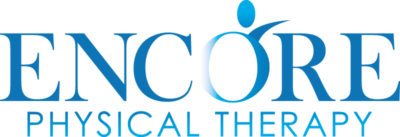 Pain centered around the elbow that may or may not radiate down or up the arm could be a condition commonly known as tennis elbow or golfer’s elbow. Ironically, while it is a common ailment of athletes, it can also be caused by any repetitive motion so it is often seen in professional painters, those who work at a computer, construction workers, cooks, etc. Typically pain is felt or is increased up to several hours following the offending activity.
Pain centered around the elbow that may or may not radiate down or up the arm could be a condition commonly known as tennis elbow or golfer’s elbow. Ironically, while it is a common ailment of athletes, it can also be caused by any repetitive motion so it is often seen in professional painters, those who work at a computer, construction workers, cooks, etc. Typically pain is felt or is increased up to several hours following the offending activity.
The condition is more technically known as epicondylitis and although it does involve the inflammation identified by the “itis” in its name, there is more to it. Your doctor may also refer to it as tendonitis, which is an inflammation of the tendon. That is often the case, however, a more accurate diagnosis identifies the overuse of the tendon. This overuse and repetitive motion results in microtears of the tendon, a condition called tendonosis.
While we’re busy defining terms, there is a difference between tennis elbow and golfer’s elbow even though they both cause pain of the elbow region. Tennis elbow is lateral epicondylitis, meaning it affects the outside of the elbow. This pain is felt throughout the elbow, forearm, wrist, and sometimes even parts of the hand. Golfer’s elbow, on the other hand, is medically referred to as medial epicondylitis and affects the inside of the elbow, also radiating down the forearm and wrist or up to the upper arm. 
Epicondylitis is most common in people ages 35-50. Those under age 35 showing symptoms may be evaluated for growth plate issues or other causes. Those over 50 could have other causes as well, such as misalignment. For this reason, it’s important to be diagnosed by a medical professional.
Epicondylitis can often be treated with rest, ice, and anti-inflammatory medication. Sometimes these efforts alone will reverse the problem within a few days, or it could take up to one year.
Adding physical therapy to your toolbox of remedies can reduce healing times and make your recovery more comprehensive. Physical therapy can help increase strength, improve flexibility, and rejuvenate healing blood flow. The first step of treatment is evaluation. This involves a discussion of your work and leisure activities and a physical evaluation of your movement and use of muscles, tendons, and ligaments in the elbow area. Your therapist may also identify seemingly unrelated problems such as misalignment in the shoulder, upper back, or neck regions. 
If your therapist thinks it is too soon to initiate strengthening, he or she might start with techniques to reduce inflammation and pain. These may include E-stim, massage, ice, tape, straps, braces, relaxation, or shockwave and laser therapy.
Once your therapist decides you’ve reached the right level of healing, it’s time to introduce new exercises to improve flexibility and strengthen muscles from the tips of your fingers up your arm. These will likely include stretching of the hands, wrists, and forearms. Your therapy will also include customized exercises to strengthen muscles that work in conjunction with your tendons. Since epicondylitis is caused by repetitive motion, your physical therapist can help you retrain your body towards different movements to resist future occurrences.
With the proper evaluation, therapy, and training, epicondylitis can completely heal, leaving you to crush that golf drive or smash the squash shot. If you think epicondylitis is holding you back, call Encore Physical Therapy to set up an appointment today.
